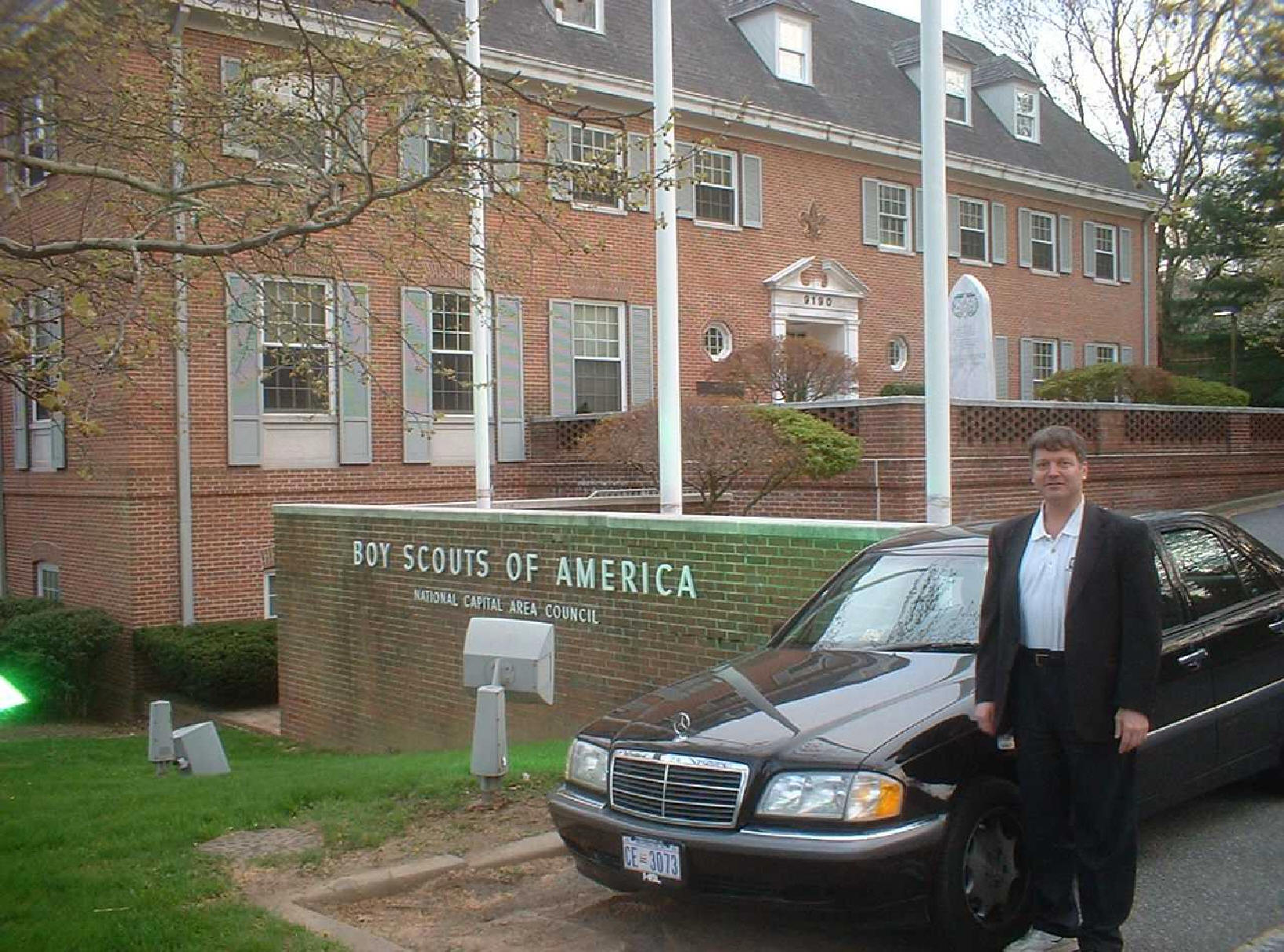- Give a short history of computers. Describe the major parts of a computer system. Give
four different uses of computers.
- Do the following:
- Tell what a program is and how it is developed.
- Give three examples of programming languages and what types of programming they are used
for.
- Describe a source program and an object program.
- Show how the following may be stored in computer memory: text, numbers, pictures, and
sound.
- Do THREE of the following:
- Use a database manager to create a troop roster, providing name, rank, patrol, and
telephone number of each Scout. Sort the register by rank, by patrol, and alphabetically
by name.
- Use a spreadsheet program to develop a weekend campout food budget for your patrol.
- Use a word processor to write a letter to parents of your troop's Scouts, inviting them
to a court of honor. Use the mail merge feature to make a personalized copy of the letter
for each family.
- Use a computer graphics program to design and draw a campsite plan for your troop.
- Do TWO of the following:
- Visit a business or industry that uses computers. Study what the computer accomplishes
and be prepared to discuss what you observed.
- Use a computer attached to a local area network or equipped with a modem to connect to a
computer network or bulletin-board service such as Prodigy, CompuServe, or America Online.
Send a message to someone on the network or download a program or file from the network.
- Use a general-purpose programming language to write a program application of your
choice, subject to approval by your counselor.
- Be prepared to discuss several terms used in each of the following categories:
- Input/output devices
- Storage media
- Memory
- Processors and coprocessors
- Modems
- Networks
- Electronic mail
- Robotics
- Be prepared to discuss various jobs in the computer field.
- Is it permissible to accept a free copy of a computer game or program from a friend? Why
or why not?
- Describe several ways in which you and your family could use a personal computer other
than for games and recreation.
BSA Advancement ID#: 36

Become "Boy Scouts Computer Certified"

Links
www.Scouting.org
Boy Scouts of America Official Site
www.boyscouts-ncac.org
National Capital Area Council
9190 Rockville Pike
Bethesda, MD 20814-3897
Phone: 301-530-9360
enrich.sdsc.edu/boyscout
Helpful Tips at
www.ceap.wcu.edu/houghton/scouting/computers.html
Microsoft Training & Certification
Location in Washington DC Area
3300 Fairfax Drive, Suite C
Arlington, VA 22201
Clarendon Metro Stop
Computer Merit Badge Instructor:
Rick Shaddock, Eagle Scout, Troop 208
Troop Committee Chairman, Troop 108
Internet Merit Badge Requirements Committee
703-486-2222 or 641-472-5830
President, Computer Instruction Corporation
Washington, DC
"Scouting develops many useful
career skills, especially the computer merit badge.
Get in to computers, not drugs. Join the Scouts, not
gangs."



National Capital Boy Scouts Headquarters
ComputerMeritBadge.org advisory
board
Under Construction: Proposed
Internet
Merit Badge


http://www.scouting.org/nav/enter.jsp?s=by
ComputerMeritBadge.Com
ComputerMeritBadge.Net
ComputerMeritBadge.Org
are the intellectual property of






